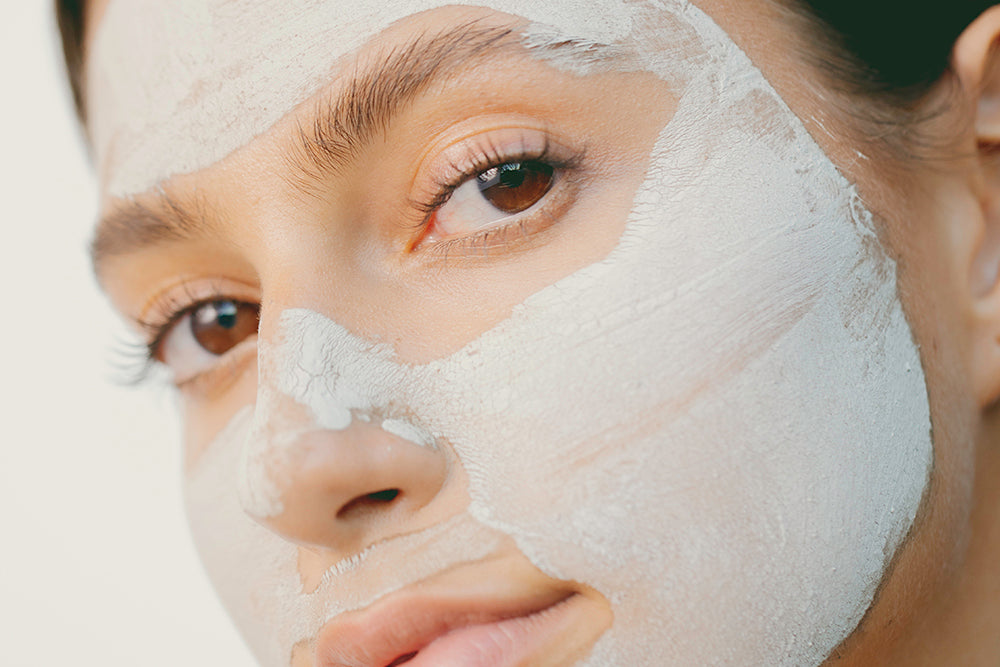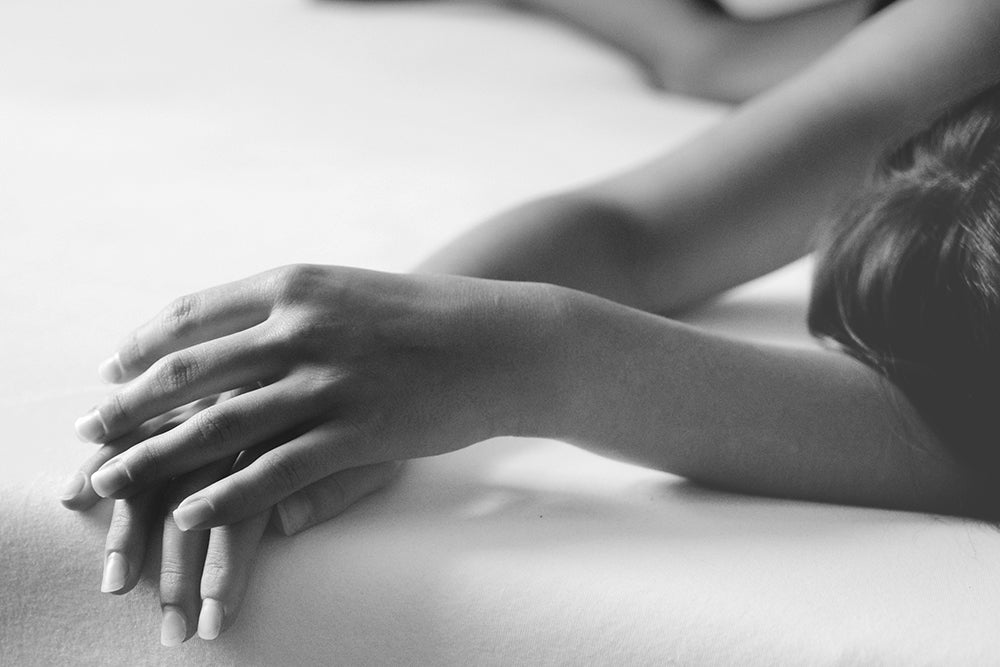
(50) shades of clay: how and why to choose and use a clay masque

the bottom line
so, there aren’t really 50 shades of clay, but this fantastically underrated and humble ingredient has more nuances than you can shake a cable tie at. if there’s one thing that gets us hot and bothered, it’s a good masque, and specifically, a deeply cleansing, clarifying clay masque. so why is clay such an exciting ingredient, and what do we do with that dry stuff in jar once we get it home? read on, beauty, for a titillating tale of clay.
first layer: science
What exactly is clay? Clay is a natural, fine grain material formed from rock or soil. It’s made up of mineral constituents which consist of clay minerals such as illite, kaolinite, montmorillonite-smectite, and chlorite, as well as associated minerals such as magnetite, hematite, and diaspore.
Never content with taking the easy path, clay minerals form over very long periods of time as rocks weather or through hydrothermal activity. Clays have historically been used as medical remedies for the treatment of wounds, often being used in poultices to aid in the reduction of inflammation. There’s even scientific research which suggests that clays have antibacterial effects, specifically against Staphylococcus aureus and Escherichia coli. Clays which contain iron, copper, and zinc are of special interest for wound healing, as these minerals are essential ingredients in collagen formation.
Finally, clays fall into two general categories: absorbent (absorbs water and swells), and adsorbent (attract particles but don’t swell). Absorbent clays adhere to the skin, and are able to absorb excess sebum, bacteria, dead skin cells, and blackheads. Adsorbent clays, on the other hand, attract dirt and grime to the clay particle, and do not swell with the addition of water. Adsorbent clays are ideal for dry and sensitive skin, while absorbent clays are preferable for oily skin types.
second layer: shades of clay
One of the best things about clays is their varied colors: clays come in almost every color under the rainbow, and their hue is determined by the soil content in which they are found. Here are some of the most common clays used in skin care face masques:
kaolin clay: also known as white clay, this is a kaolinite and is considered to be the mildest of all clays. Because it’s adsorbent and can bind bacteria and dirt, it’s an excellent choice for dry and sensitive skin. It also stimulates the circulation while cleansing and gently exfoliating.
red clay: red clay is an illite, an effective absorbent clay. It makes an ideal face mask for oily skin as it absorbs oil and exfoliates.
rhassoul mud: rhassoul mud, also known as Moroccan lava clay, is an ancient clay mined from the Atlas Mountains of Morocco and then milled into a very fine powder. It includes minerals such as silica, magnesium, and calcium, and is an absorbent clay ideal for oily skin.
Fuller’s earth: Multani mitti clay, or Indian Fullers Earth, is formed by the decomposition of volcanic ash and is high in aluminum, silica, iron oxides, lime, and magnesium. It is a highly absorbent cosmetic clay which can draw excess oil from the skin and stimulate the circulation. Because it is so absorbent, it should only be used very sparingly (no more than once per week) on very oily or acne-prone skin.
pink clay: pink clay is a combination of white kaolin and red clays and combines the best of both worlds by being both absorbent and adsorbent. It binds bacteria and dirt, while cleansing, exfoliating, and stimulating the circulation. Dry, mature, and sensitive skin types generally respond well to pink clay.
green clay: a montmorillonite clay, green clay is a soft, mineral-rich clay that is found in and named after Montmorillon, a commune located in western France. It is an absorbent clay which efficiently attracts and absorbs dirt and oil from the skin, while rejuvenating it with a rich mineral composition that helps to promote glowing, softer skin.
yellow clay: yellow clay comes in both absorbent and adsorbent forms. Yellow illite clay effectively absorbs oil and impurities from oily skin, while yellow kaolin clay is adsorbent, and therefore is milder and suitable for dry and sensitive skin.
blue clay: one of our favorites as well as one of the most unusual and valuable clays, blue clay is found in the salt lakes of Utah and Siberia. Cambrian blue clay in particular derives its gorgeous hue from iron, zinc, and algae. As an adsorbent clay with kaolinite, it is believed to purify the skin, reduce pore size, and promote skin regeneration thanks to its mineral content of silica, kaolin, calcium, phosphate, iron, magnesium and zinc. In body masks, this blue beauty has been known to decrease subcutaneous fat and the “orange peel” look, restoring skin firmness and elasticity. It has been used in the treatment of acne for its ability to reduce inflammation and gently exfoliate while stimulating the circulation.
bentonite clay: bentonite clay is a combination of montmorillonite and volcanic ash and is a highly absorbent cosmetic clay that draws oils and impurities from the skin. Save this one for use on oily skin.
third layer: activation
When we talk about activation of a masque, we’re indicating that liquid has been added to the dry powder to ease application. Some clays, such as bentonite, swell with the application of liquid which breaks down the individual clay particles. Other clays, such as kaolinite, do not swell with the addition of water. Most natural clay masques will come in powder form, for good reason – it’s incredibly difficult to preserve an activated clay masque against bacteria, mold, and yeast with natural preservatives. Bacteria and fungus thrive in moist environments, and for this reason all water-based products should contain a preservative unless they will be used within several days and refrigerated to slow growth. So, expect your truly natural clay masque to arrive in powder form, which needs to be activated prior to use. To activate your masque, add 1-2 teaspoons of dry masque powder to a clean dish or bowl (those little soy sauce bowls are perfect). Add enough liquid of your choice and swirl with a brush to form a smooth paste. The specific liquid is your choice and depends on your skin type, but for increased moisture, we favor honey, coconut milk, yogurt, cream, or whole milk (save the low-fat stuff for breakfast). For oily skin, use a bit of your toner or water. Sparkling water works nicely, too.fourth layer: layer it
We prefer to use masques when they are warm or at room temperature, as heat will open the pores to allow for easier removal of debris, as well as subsequent absorption of the key ingredients of your next layer. Allow the masque to dry by about 75% - a completely dry clay masque will begin to pull moisture from your skin. Moisten fingertips or use a damp cloth to gently remove the masque from your face. Follow with our lotus flower & rosewater toner, jasmine serum, and lotus & lychee facial crème to complete your rejuvenating skincare routine.
xx
anokha
references:
-
fromnaturewithlove.com
-
formulabotanica.com
-
wikipedia.org
-
Garcia-Villen F, Souza JMS, de Melo Barbosa R, Borrego-Sanchez A, Sanchez-Espejo R, Ojeda-Riascos S, Iborra CV. Natural Inorganic Ingredients in Wound Healing. Curr Pharm Des 202 26(6): 621-641.



leave us a comment
This site is protected by hCaptcha and the hCaptcha Privacy Policy and Terms of Service apply.